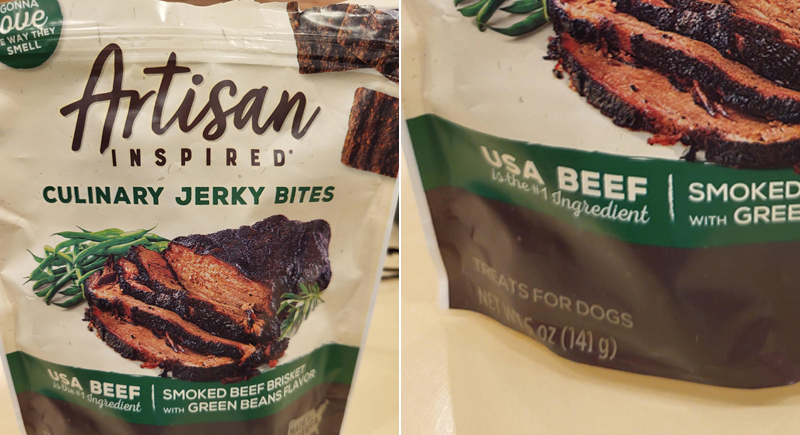This Person Accidentally Ate a Bag of Dog Treats (And Didn’t Mind It)
A Reddit user recently shared a mix-up that turned into a viral confession. They’d picked up a sleek-looking bag labeled “culinary, smoked brisket jerky.” It looked like an upscale snack, complete with appetizing photos. After eating half of it, they noticed a tiny detail at the bottom: “Treats for dogs.” The interesting thing is that the food hadn’t tasted terrible. It was unusual, sure, but not unbearable.
Packaging That Looks Way Too Convincing

Image via Reddit/bobosdreams
The jerky’s packaging fooled many who saw it online. Commenters pointed out that the visual presentation did more harm than the labeling itself. The front gave no hint it was meant for pets. One person even joked that the photo needed a drooling dog instead of a steak.
It’s easy to see how people mix them up. Pet treats now come in sleek packaging and flavors that sound straight off a health food shelf. With so many brands using words like “organic,” “natural,” or “high-protein,” the difference between a snack for you and one for your dog isn’t always obvious.
What Dog Treats Actually Taste Like
Dog treats tend to smell better than they taste. People who’ve tried them describe an odd mix of bland saltiness and dry texture. Some said the scent was misleading because it promised flavor but delivered something closer to stiff cardboard. A few people in the Reddit thread admitted to eating them before, either as children or during dares.
One user mentioned their grandmother regularly snacked on bacon-shaped snacks thinking they were “healthy bacon.” The reason is simple: many dog snacks use strong meat aromas to attract pets but avoid sugar, salt, or seasoning meant for human palates. The result is a food that smells rich yet tastes dull.
Dogs enjoy that earthy simplicity, but people expect complexity. The difference isn’t just in the culinary appeal but in design, as treats are made for a sense of smell that dominates over taste, unlike human snacking habits that prioritize flavor over aroma.
Why Some People Eat Them Anyway

Image via iStockphoto/Spauln
Curiosity, confusion, and even trends have made canine treats unexpectedly popular among humans. In 2023, a social media wave featured fitness influencers eating pet food for its high protein content. They claimed it helped build lean muscle, though experts later explained that the nutritional balance wasn’t right for people.
For others, the reason was simple curiosity. Many people want to know what their pets are eating. Some with limited budgets have even tried pet food for economic reasons, though it’s not recommended. Then there are those drawn in by dares or nostalgia after childhood experiments. Edible chews often look similar to jerky, granola bites, or crackers, especially the single-ingredient types made purely from dried meat.
Health and Safety Risks for Humans
Pet treats aren’t designed with human digestion in mind. While most are not toxic, they can carry risks. The U.S. Food and Drug Administration requires dog food to be safe for animal consumption, but its standards differ from those for people. Contamination by bacteria like Salmonella is a key concern. Dogs can handle it due to stronger stomach acid and faster digestion, but humans are more vulnerable.
Some treats also use animal by-products such as organs, bones, and skin, materials unsuitable for human diets. Vitamin levels and additives are formulated for canine health, not ours. Eating small amounts by mistake usually isn’t dangerous, but frequent consumption could cause nutrient imbalances or digestive irritation.
Experts recommend treating any pet food as off-limits for humans, even when it looks and smells harmless. The Reddit post was a funny story, but it highlighted how easily packaging and presentation can blur common sense around what belongs in a person’s diet.